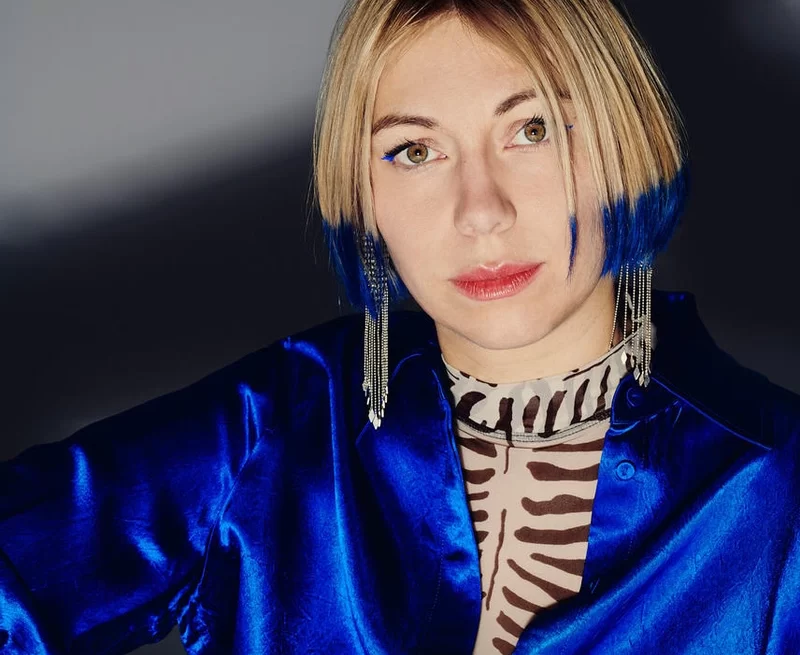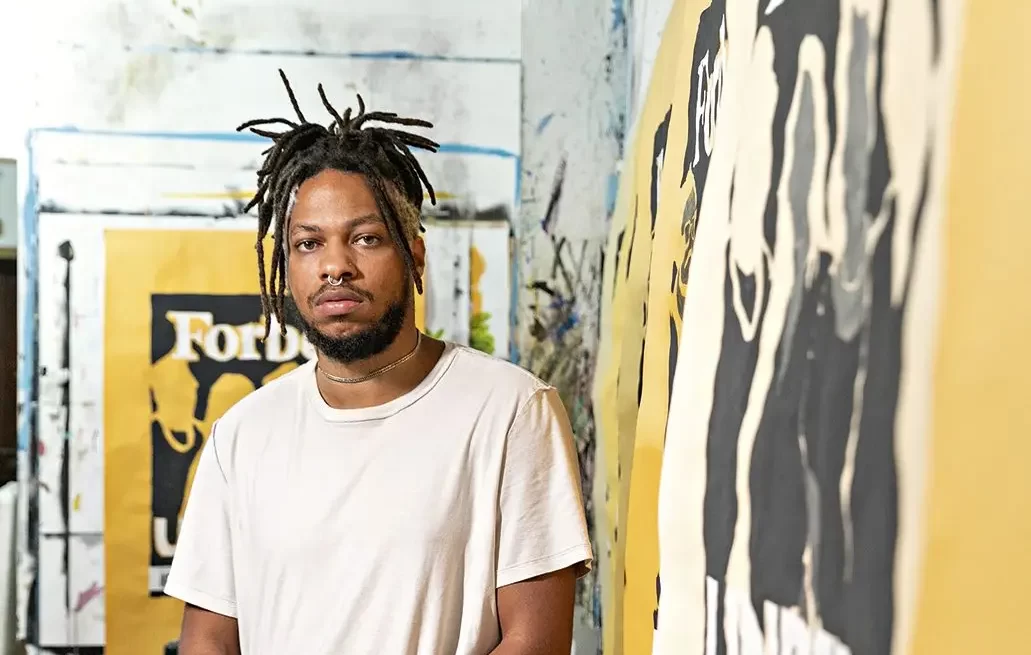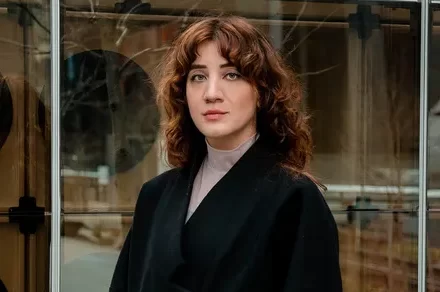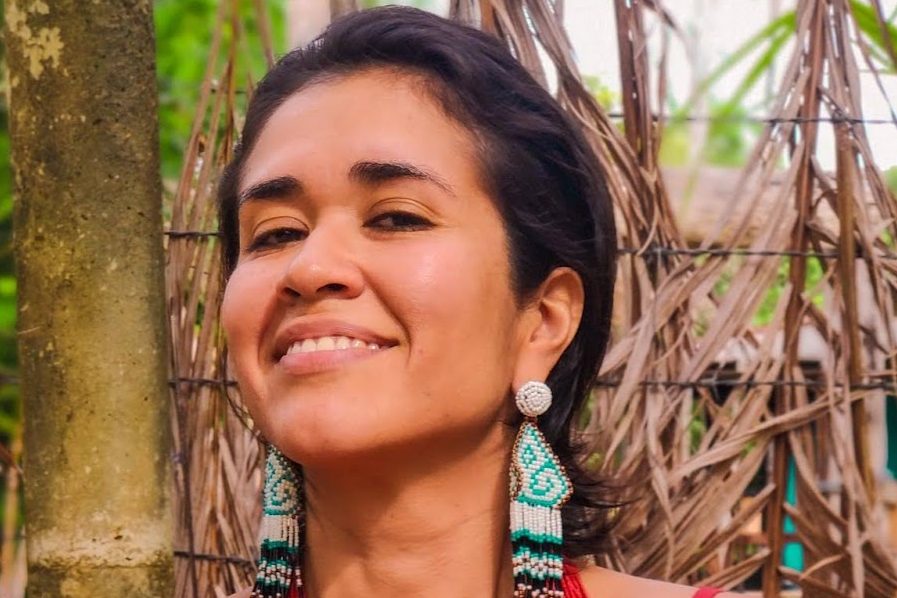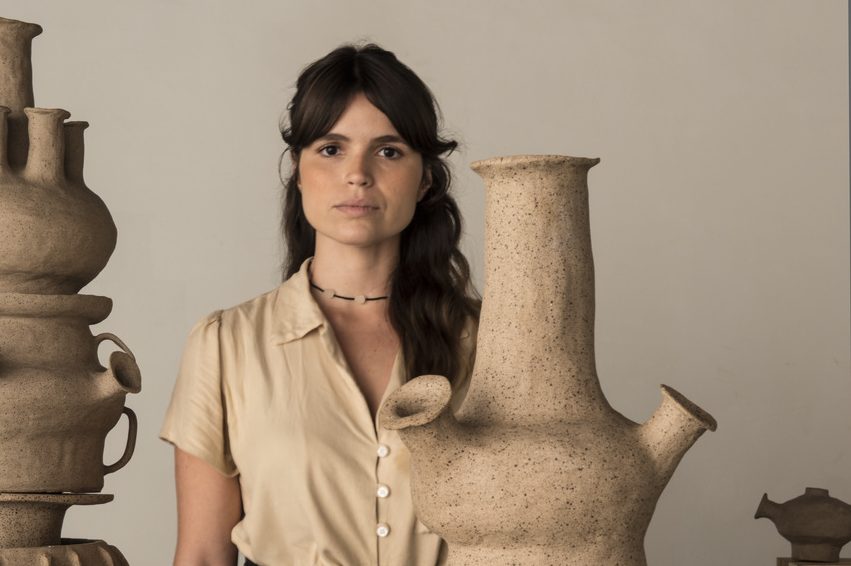Joanna Piotrowska (Varsóvia, Polônia, 1985) mora e trabalha em Londres. Possui graduação de Bacharel em Artes pela Academy of Fine Arts, Cracóvia, em 2009, e Mestrado em Artes em Fotografia pela Royal College of Art, Londres em 2013. Em 2014, MACK Books publicou seu projeto FROWST. Suas exposições incluem: Joanna Piotrowska, Dawid Radziszewski Gallery, Varsóvia, 2016; Hester, Southard Reid, Londres, 2015, FROWST, Ethnographic Museum, Cracóvia, 2015; s.w.a.l.k, Project Space, Northern Gallery of Contemporary Art, Sunderland, 2014. Exposições em grupo incluem: What love has to do with it, Project Space, Hayward Gallery, Londres, 2014; Bloomberg New Contemporaries, Institute of Contemporary Arts, Londres, 2013, Give me yesterday, Prada Foundation, Milão, 2016, ROOM, Sadie Coles, Londres, 2016, These Rotten Words, Chapter Gallery, Cardiff, Reino Unido. Joanna atualmente está trabalhando em seu segundo livro com a Humboldt Books.
FRANTIC
O conceito de lar nos conecta com noções de familiaridade, conforto e formação de laços. No entanto, não há que se confundir essa experiência com a simples relação entre corpo e espaço — algo relacionado às infinitas possibilidades de arquitetura, cidade, fronteiras e outros elementos que mudam de um contexto geográfico e cultural para o outro. Diferentemente de um elemento construído que constitui um ambiente, o fenômeno de ser orientado — espacial, temporal, ou socialmente — por uma ordem familiar e cultivar afeto e identificação em relação a um lócus é algo universal, e independe de características específicas. Trata-se de uma relação emocional de pertencimento, passível de ser desenvolvida em qualquer idade, cultura ou local.
O projeto de Joanna Piotrowska desenvolvido durante a residência no Instituto InclusArtiz, no Rio de Janeiro, parte dessas premissas em direção a um interesse pela natureza do espaço doméstico, e combina ativação de situações com produção de imagem através da fotografia. Seus estudos abordam os cruzamentos de relações pessoais, emocionais e corporais com arquitetura, e sensações de privacidade, segurança e intimidade. Na busca por encontros que possam trazer a tona manifestações potentes da subjetividade, a artista convida pessoas para a receber em suas casas e propõe que elas construam pequenos abrigos temporários —ideia inspirada por uma foto de família que registrava a tão conhecida brincadeira doméstica. A partir de um diálogo no lugar, essas estruturas são livremente montadas e mais tarde fotografadas com seus habitantes. É quando abajures, guarda-chuvas e vassouras se juntam a cadeiras, livros e lençóis. Ao passo que a temática infantil é operacionalizada pela racionalização adulta, formam-se pequenos bunkers, choupanas, barracas e tendas dentro de espaços constituídos por ações que miram o privado e o perene. É quando um corpo humano se junta ao exoesqueleto formado com gambiarras. Tudo muito familiar e, paradoxalmente, muito esquisito.
Ao observarmos como cada um reage diante das necessidades imediatas e dos recursos disponíveis atentamos para certos padrões e também marcantes escolhas pessoais. Surgem ícones do cotidiano mental, do lugar subjetivo e da posse material dessas pessoas.
Por fim, pensar o caráter dessas cabanas erguidas dentro de casas comuns nos coloca diante de questões sobre vínculos entre proteção material e guarida afetiva. É inescapável refletir sobre o lugar — espiritual e social — do indivíduo dentro de organizações econômicas e políticas. Vem a tona então a condição de pessoas desabrigadas, em situação de rua ou imigração, enquanto aparece a frágil busca de qualquer arquitetura capaz de oferecer real abrigo em meio ao sempre apocalipse eminente.
Additional Information
EXPOSIÇÕES SELECIONADAS
2017 / próxima
Galeria da Boavista, Lisboa, Portugal
Southard Reid Gallery, Londres, Reino Unido
These Rotten Words, Chapter Arts Centre, Cardiff, Reino Unido
Art Basel / Statements com Dawid Radziszewski Gallery, Basel, Suíça
2016
ROOM, Sadie Coles, Londres, Reino Unido
Give me yesterday, Prada Foundation, Milão, Itália
Frantic, Madragoa Gallery, Lisboa, Portugal
LISTE 2016, Basileia, Suíça / Dawid Radziszewski Gallery
Joanna Piotrowska, Dawid Radziszewski Gallery, Varsóvia, Polônia
2015
Hester, Southard Reid, Londres, Reino Unido
How Are You? Księgarnia | Wystawa, Cracóvia, Polônia
Frowst, Ethnographic Museum, Photomonth, Cracóvia, Polônia
Lea Cetera, Daniel Lipp & Joanna Piotrowska, Sunday At Fair, Londres, Reino Unido
Jerwood and Photoworks Awards 2015, Jerwood Space, Londres, Reino Unido
True Players, W139, Amsterdam, Países Baixos
Art Lending Library project by Walker & Bromwich, Northern Gallery of Contemporary Art, Sunderland, Reino Unido
Kombucha, Bunkier Sztuki, Cracóvia, Polônia
Altrimenti che essere, Galleria Oltredimore, Gender Bender Festival, Bologna, Itália
Krasna-Krausz Book Awards and First Book Award 2015, Media Space, Science Museum, Londres, Reino Unido
2014
s.w.a.l.k, Project Space, Northern Gallery of Contemporary Art, Sunderland, Reino Unido
What love has to do with it, Project Space, Hayward Gallery, Londres, Reino Unido
2013
Bloomberg New Contemporaries, Institute of Contemporary Arts, Londres, Reino Unido
When Sleeper Wakes, Aperto Gallery, S. Petersburgo, Rússia
Family Politics, Jerwood Space, Londres, Reino Unido
Fly me through the night, Pilot, Private house at Primrose Hill, Londres, Reino Unido
Bloomberg New Contemporaries, Spike Island, Bristol, Reino Unido
Call XV, Luis Adelantado Gallery, Valencia, Espanha
21st Century Art and Design, RCA 2013, Christie’s, Londres, Reino Unido
Graduação em Artes Graduation Show, Royal College of Art, Londres, Reino Unido
2012
The Suspension of History, Basement Project Space, Cork, Irlanda
2010
Sittcomm.award, Wyspianski Pavilion, Cracóvia, Polônia
5128, Zpafiska Gallery, Cracóvia, Polônia
IMPRENSA RECENTE SELECIONADA
Novembro de 2016 Heavy Collective, Volume II, recurso pictórico
Novembro de 2016 Dazed Magazine, recurso pictórico
setembro de 2016 Office Magazine, recurso pictórico
agosto de 2016 Tank Magazine, recurso pictórico
julho de 2016 Genda Magazine, recurso píctórico
fevereiro de 2016 Tank Magazine, recurso pictórico
janeiro de 2016 Calvert 22, texto de Isabella Miklewska
Janeiro de 2016 Vice. Broadly, texto de Anastasiia Fedorova
Novembro de 2015 Re-Edition Magazine, recurso pictórico
Novembro de 2015 Vault Magazine, texto de Daniel Boetker Smith
Novembro de 2015 Another Magazine, entrevista, online
Maio de 2015 Magenta Magazine, recurso pictórico
Maio de 2015 Art News, revisão por Jennifer Thatcher
março de 2015 Art Monthly, revisão por Nick Warner
Março de 2015 Calvert 22, resenha por Anastasiia Fedorova, online
Primavera 2015 Tjej Land, texto de Stanley Wolukau-Wanambwa
Inverno 2014 Abertura, texto de Wojciech Nowicki
Inverno 2014 Dazed Magazine, recurso pictórico, Never is a Long Time
Inverno 2014 Dazed Magazine, 100 pessoas que influenciaram a cultura
esta ano
Julho de 2014 Paper Journal, Uncertain Constellations, entrevista por Darren Campion, online
Maio de 2014 Packet biweekly, entrevista por Ian Lewandowski
Dezembro de 2013 The Independent, Art Stars of Tomorrow por Adrian Hamilton
Dezembro de 2013 Dust Magazine, Frowst, texto de Anca Rujoiu, online
Novembro de 2013 Photomonitor, entrevista por Christiane Monarchi, online
Novembro de 2013 Time Out, Bloomberg New Contemporaries, revisão por Martin Coomer Art
COLEÇÕES PÚBLICAS SELECIONADAS
Northern Gallery of Contemporary Art, Sunderland, Reino Unido
British National Photography Collection, Bradford, Reino Unido
PRÊMIOS E RESIDÊNCIAS SELECIONADOS
2016
Prêmio Artissima, vencedora
Nomeação para Prêmio da Paul Hamlyn Foundation
Nomeação para Prêmio Paul Huf Award, Foam Museum, Amsterdam
2015
Nomeação para Prêmio Paul Huf Award, Foam Museum, Amsterdam
Nomeação para Deutsche Borse Photography Prize 2015
Nomeação para DZ Bank Photography Prize
Plat(t)form 2015, Winterthur Fotomuseum, Suíça
Photoworks & Jerwood Award 2015, inverno
2014
Nomeação: reGeneration, Tomorrow’s Photographers Today
Nomeação: REFOCUS: The Middlesbrough Institute of Modern Art, Castlegate Photography Prize
Kuldiga Artists Residence 2014
Prêmio First Book Award, MACK Books, vencedora
2013
Selecionada para Guia Catlin 2013
2011
Bolsa Genesis Foundation, inverno
2010
Nomeação para prêmio sittcomm. award 2010
Creative Scholarship (Bolsa) do Prefeito da Cidade de Cracóvia
Hidden Places artist in residence, Görlitz, Alemanha
PALESTRAS E CONFERÊNCIAS SELECIONADAS
2014
Lançamento do livro Frowst, Claire de Rouen, Londres, Reino Unido
Palestra da Artista, Calvert 22 Gallery, Londres, Reino Unido
Lançamento do livro e conversa com Ben Burbridge, Hayward Gallery, Londres, Reino Unido
BIBLIOGRAFIA
2017 Frantic pela Humboldt Books
2014 Frowst pela Mack
FORMAÇÃO
2011 – 2013 Mestrado em Artes Fotografia, Royal College of Art, Londres, Reino Unido
2004 – 2009 Bacharel em Artes Fotografia, Academy of Fine Arts, Cracóvia, Polônia



